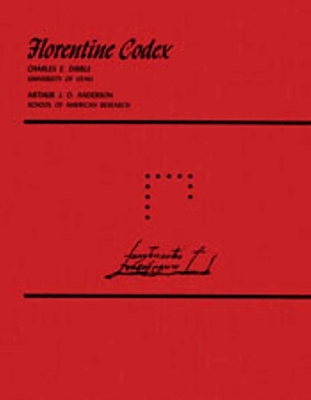Florentine Codex; A General History of the Things of New Spain
2 primary works
Book 2
Two of the world s leading scholars of the Aztec language and culture have translated Sahagun s monumental and encyclopedic study of native life in Mexico at the time of the Spanish Conquest. This immense undertaking is the first complete translation into any language of Sahagun s Nahuatl text, and represents one of the most distinguished contributions in the fields of anthropology, ethnography, and linguistics.
Written between 1540 and 1585, the "Florentine Codex" (so named because the manuscript has been part of the Laurentian Library s collections since at least 1791) is the most authoritative statement we have of the Aztecs lifeways and traditions a rich and intimate yet panoramic view of a doomed people.
The "Florentine Codex" is divided by subject area into twelve books and includes over 2,000 illustrations drawn by Nahua artists in the sixteenth century.
Book Two gives comprehensive accounts of the religious ceremonies and days of feasting during the time of the Aztecs, including prayers, songs, and the duties and roles of Aztecs inside the temples during the ceremonies. This book also details the various tributes and sacrifices given to specific gods.
"
Book 11
Two of the world s leading scholars of the Aztec language and culture have translated Sahagun s monumental and encyclopedic study of native life in Mexico at the time of the Spanish Conquest. This immense undertaking is the first complete translation into any language of Sahagun s Nahuatl text, and represents one of the most distinguished contributions in the fields of anthropology, ethnography, and linguistics.
Written between 1540 and 1585, the "Florentine Codex" (so named because the manuscript has been part of the Laurentian Library s collections since at least 1791) is the most authoritative statement we have of the Aztecs lifeways and traditions a rich and intimate yet panoramic view of a doomed people.
The "Florentine Codex" is divided by subject area into twelve books and includes over 2,000 illustrations drawn by Nahua artists in the sixteenth century.
Book Eleven is a beautifully written and careful documentation of all of the animals and plants known to the Aztecs in the sixteenth century. As the volume with the most illustrations, "Earthly Things" allows the reader to look at the natural world through the eyes of the Aztec."

